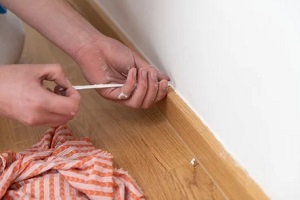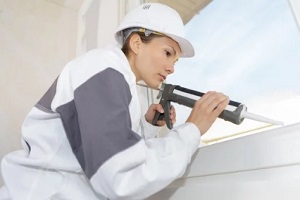 In Pennsylvania, the caulk that keeps a building in good condition is subjected to environmental extremes all year long. Blazing heat in the summer and deep, moist snow in the winter cannot break caulk; it adjusts by shrinking and expanding slightly.
In Pennsylvania, the caulk that keeps a building in good condition is subjected to environmental extremes all year long. Blazing heat in the summer and deep, moist snow in the winter cannot break caulk; it adjusts by shrinking and expanding slightly.
Over time, this can cause the caulk to degrade until it no longer properly clings to the gaps it was meant to seal. When this happens, caulking is not performing its job anymore—drafts, pests and moisture can all intrude into the building, causing expensive problems of their own.
If you have noticed that your structure needs new caulk because the existing material has pulled away, cracked or crumbled, you may be tempted to buy a caulk tube from the store and attempt to fix the issue yourself.
However, this is a task best left to professionals, and above all, you should never re-caulk over old caulk or attempt to patch by injecting material next to existing caulk.
View Commercial Exterior Caulking Services
Can You Caulk Over Old Caulking?
The overarching reason why new caulk should never be installed over old caulk is because it simply does not produce long-lasting results. The reasons why depend on what has happened to the previous caulk line.
In the case of caulk that has gotten moldy, recaulking over this material will not stop the mold problem. Instead, it will create a barrier underneath which the mold can continue to grow safely, unthreatened.
This will only exacerbate the mold problem until it spreads significantly, either up the side of the building or into the interior walls. Black mold can be hazardous to human health, and caulking over it only offers it shelter to continue to proliferate.
If the old caulk is starting to pull away or crack, adding a new caulk is like putting a bandage on a broken limb—it will not achieve any real purpose. As the old caulk continues to separate, it will pull any new caulking with it, causing the new material to pull away as well. If the old caulk was near to dropping off or crumbling, fresh caulk layered on top can drop off with it, annulling the repair entirely.
These are the practical reasons new caulk should never be installed over old caulk. However, aesthetic concerns should be considered as well. Installers will never achieve a smooth, appealing caulk line if they have to install over existing material. This can lead to a wobbly, inconsistent appearance.
The Right Way to Replace Caulk
Recaulking is a simple task in terms of the scope of the project, but it should be done correctly to ensure a tight seal and a long lifespan. Old caulk should always be removed in its entirety. Then, the underlying area can be prepared, including removing dust and debris or drying the material.
Once this process has been completed, the new line of caulk can be installed in a clean, consistent strip. This ensures proper adhesion and gives the caulk a pleasing appearance. The weather should also be factored into the equation, as caulk cures best in low humidity when the temperature is above 45 degrees Fahrenheit. Otherwise, it may absorb too much moisture or cure too quickly.
Why Recaulking Should Be Left to the Pros
 Recaulking may be theoretically simple, but doing it well requires experience. Removing caulk is more complex than tearing out old material and injecting new caulk. Carefully using tools to separate the old caulk from the gap is critical when removing it;. Experts also have experience properly applying the new caulk line so that it is consistent, aesthetically appealing and effective.
Recaulking may be theoretically simple, but doing it well requires experience. Removing caulk is more complex than tearing out old material and injecting new caulk. Carefully using tools to separate the old caulk from the gap is critical when removing it;. Experts also have experience properly applying the new caulk line so that it is consistent, aesthetically appealing and effective.
Many DIYers will install caulk in a gap and, because they cannot see the gap anymore, assume that the product is working as intended. However, achieving a complete seal requires more care and expertise. Thus, recaulking is a job best left to the professionals, who can complete the task faster than a DIY project and will do so with better end results.
Trust the Experts to Properly Recaulk Your Building
If you suspect that your building’s caulk is starting to fail, or if you see areas of obvious damage such as cracks and mold, recaulking the location is the next best step.
The experts at Waterproof Caulking & Restoration can help you with this task by making sure that recaulking is done right the first time. Contact us to discuss your goals and learn how we can make the PA commercial caulking process simple and straightforward within the confines of your budget.
